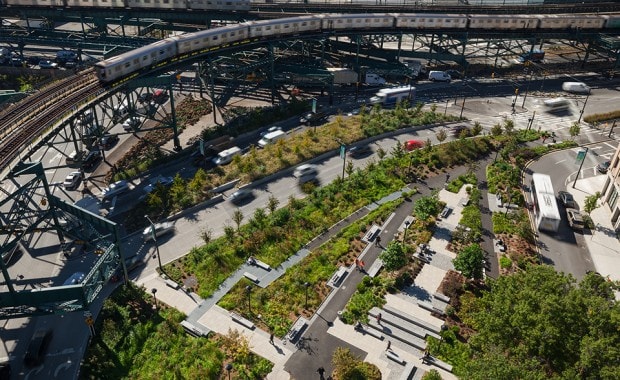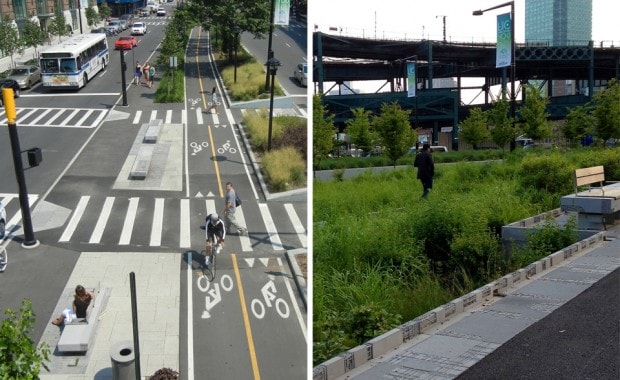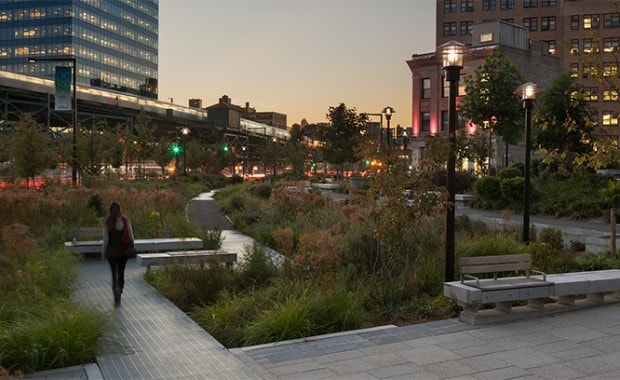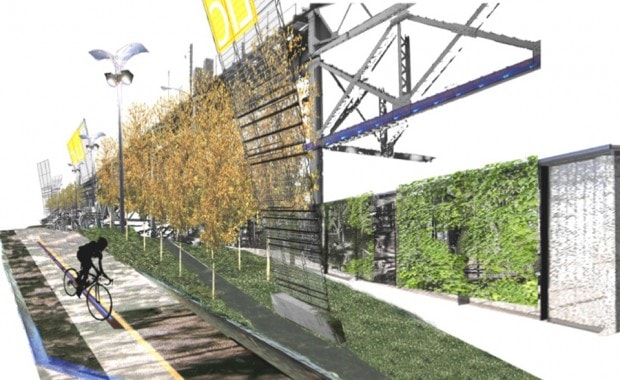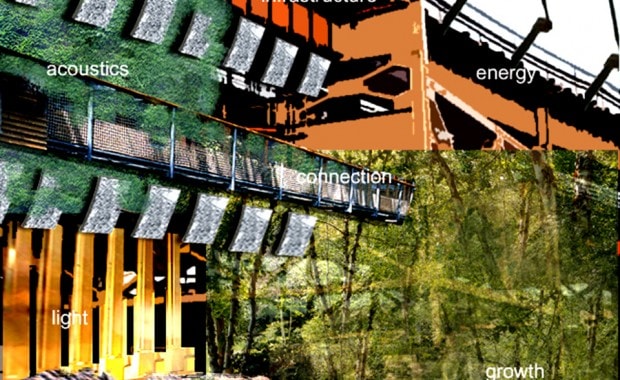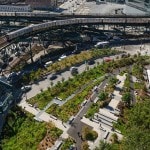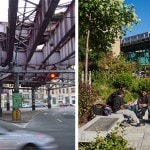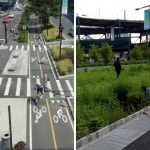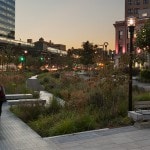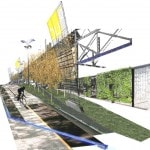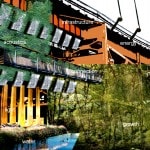Project: Queens Plaza
Location: Long Island City, NY
Firm: Margie Ruddick
Year: 2003
Firm website: margieruddick.com
Project Description: Queens Plaza is the gateway to Long Island City from Manhattan. Spanning eight city blocks, the completed project enhances a tangle of 14 lanes of traffic, two elevated subway lines, two bridges, and a parking lot. Through road realignment, the project improved vehicular circulation, created alternative transportation corridors, and opened space for a primary park area.
As one of two pilot projects for New York City’s High Performance Infrastructure Guidelines, Queens Plaza utilizes a constructed wetland and subsurface filtration systems to prevent over 20.2 million gallons of stormwater from entering the city’s combined sewer system, reduces ambient noise pollution from elevated trains passing through Queens Plaza by 23%, and has increased surrounding property values by 37% (during a period when NYC Metro property values increased by 8%). On an average summer day, Queens Plaza attracts 125 visitors to a site once described colloquially as the ‘Boulevard of Death’.
Designed in collaboration with the artist Michael Singer, the project employs interlocking and modular permeable pavers that serve as firm walking surfaces and that transport surface runoff to infiltration areas. This strategy incorporates high albedo asphalt aggregates, recycled asphalt, and reused demolition materials for a sub-base in order to reduce ambient air temperatures and watering requirements for the project’s 489 native trees and grasses.
Rather than removing or masking the surrounding infrastructural elements, the project incorporates flexible stainless steel mesh to highlight the complex and irregular volumes created by the undergirding of the elevated rails. Through creative lighting, these spaces are turned into a lantern-like serial installation suspended between the vehicular traffic above and pedestrian traffic below. These structures provide the tracks with legibility and highlight them as a wayfinding beacon at the interaction of Jackson Avenue and Queens Plaza.
Rejecting the notion of passive ‘greening,’ Queens Plaza reactivates an underutilized space and the surrounding urban fabric created by unplanned infrastructural layering. Satisfying performative criteria and providing social and recreational benefits, the project is a robust precedent of what landscape can achieve in a challenging urban context.
Project Team:
Margie Ruddick – Design Lead
Marpillero Pollak Architects – Architecture and Urban Design
Michael Singer Studio – Public Art
WRT – Landscape Architecture
Leni Schwendinger Light Projects – Lighting Design
Langan Engineering – Civil Engineering
Featured in Scenario 3: Rethinking Infrastructure
| previous project | next project |
